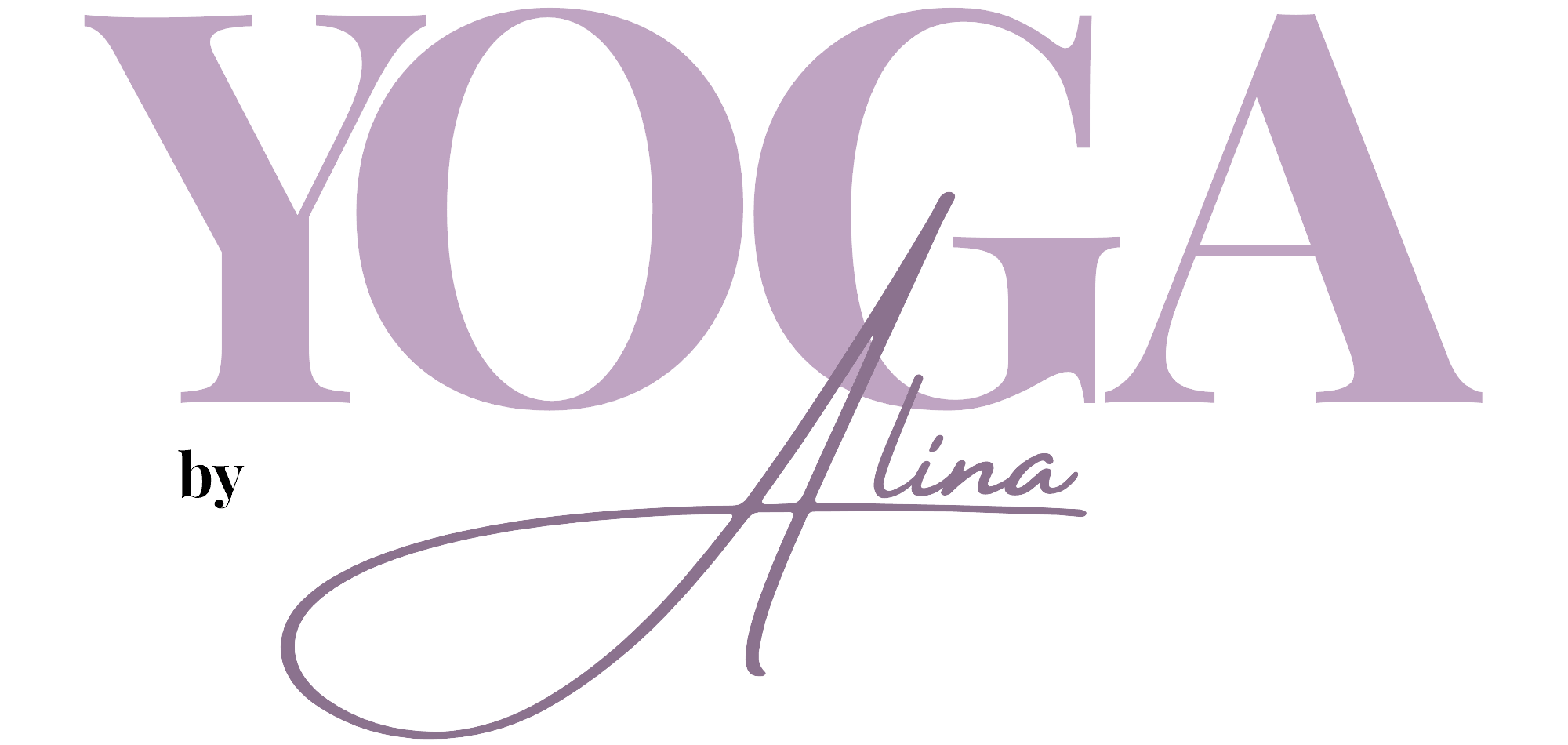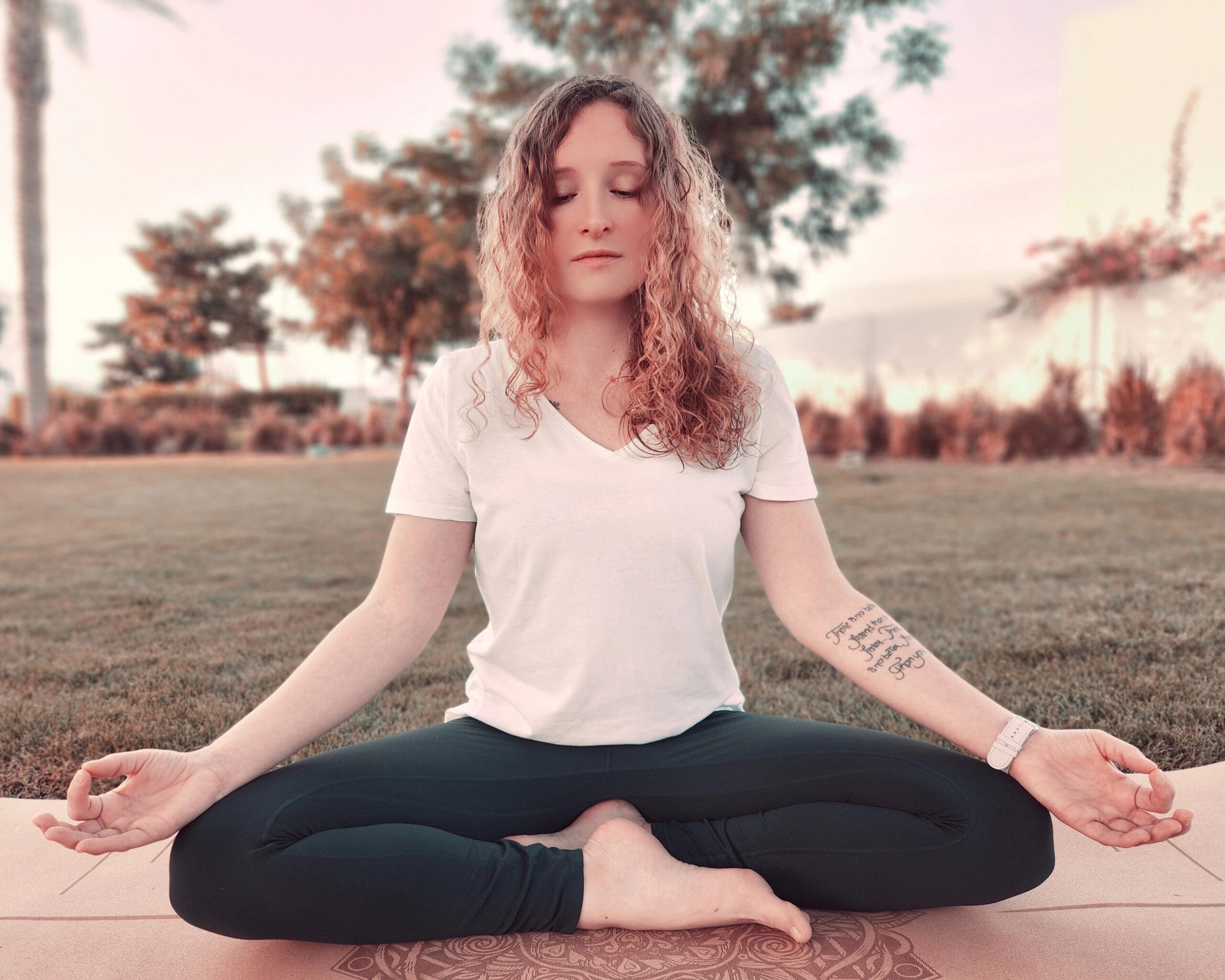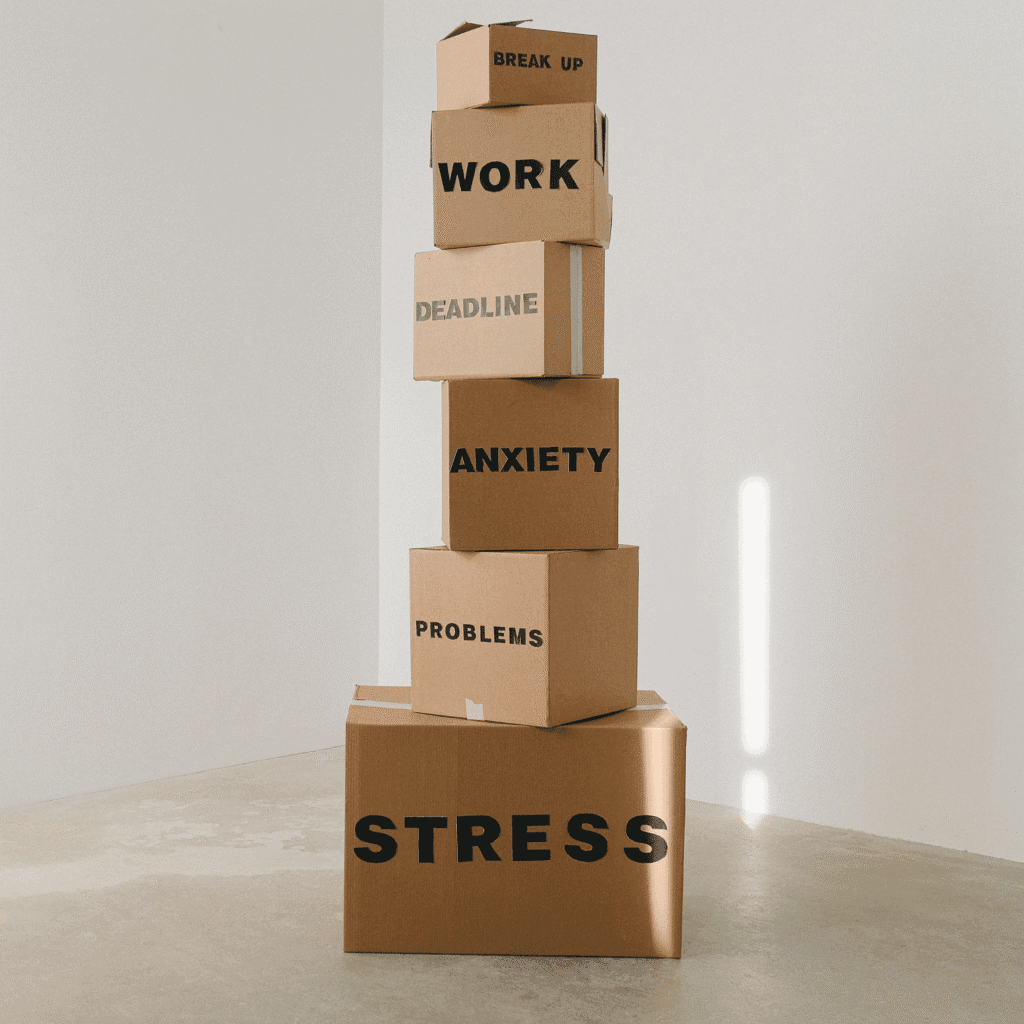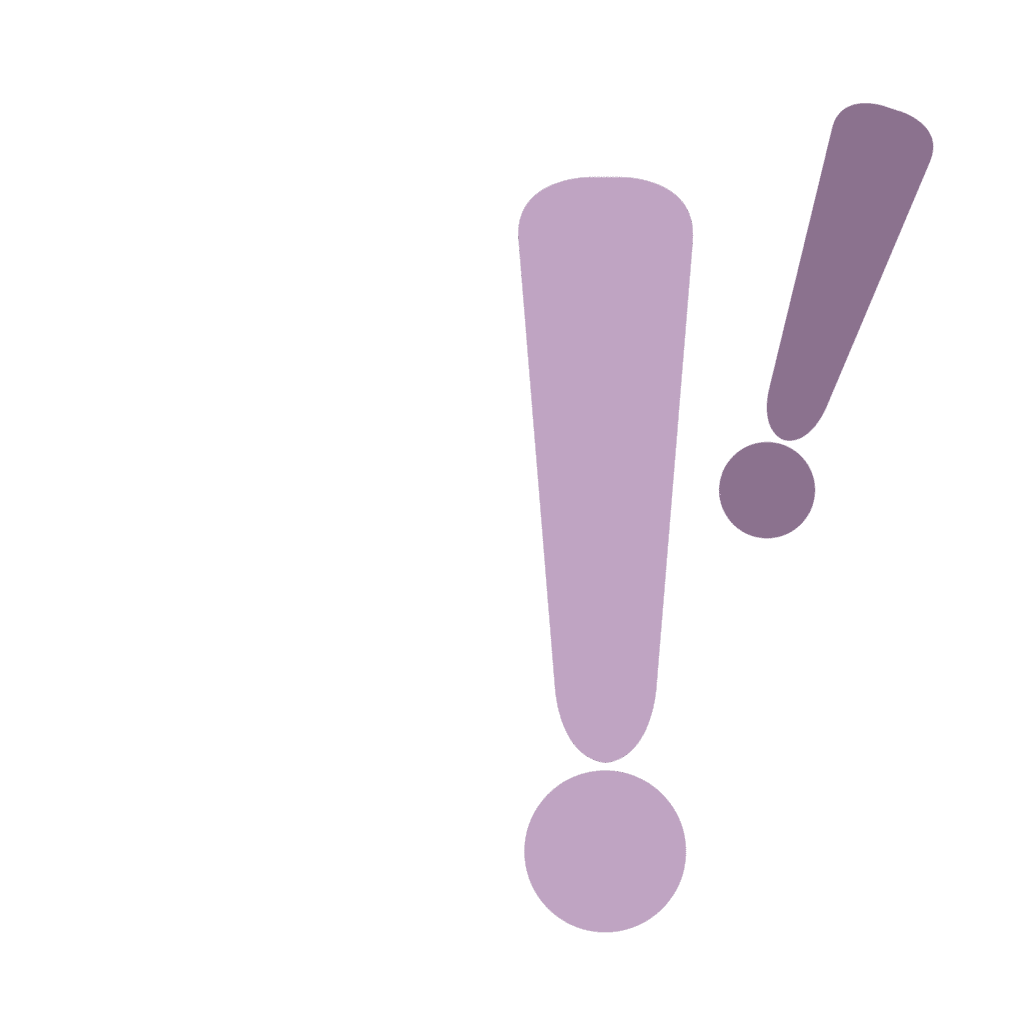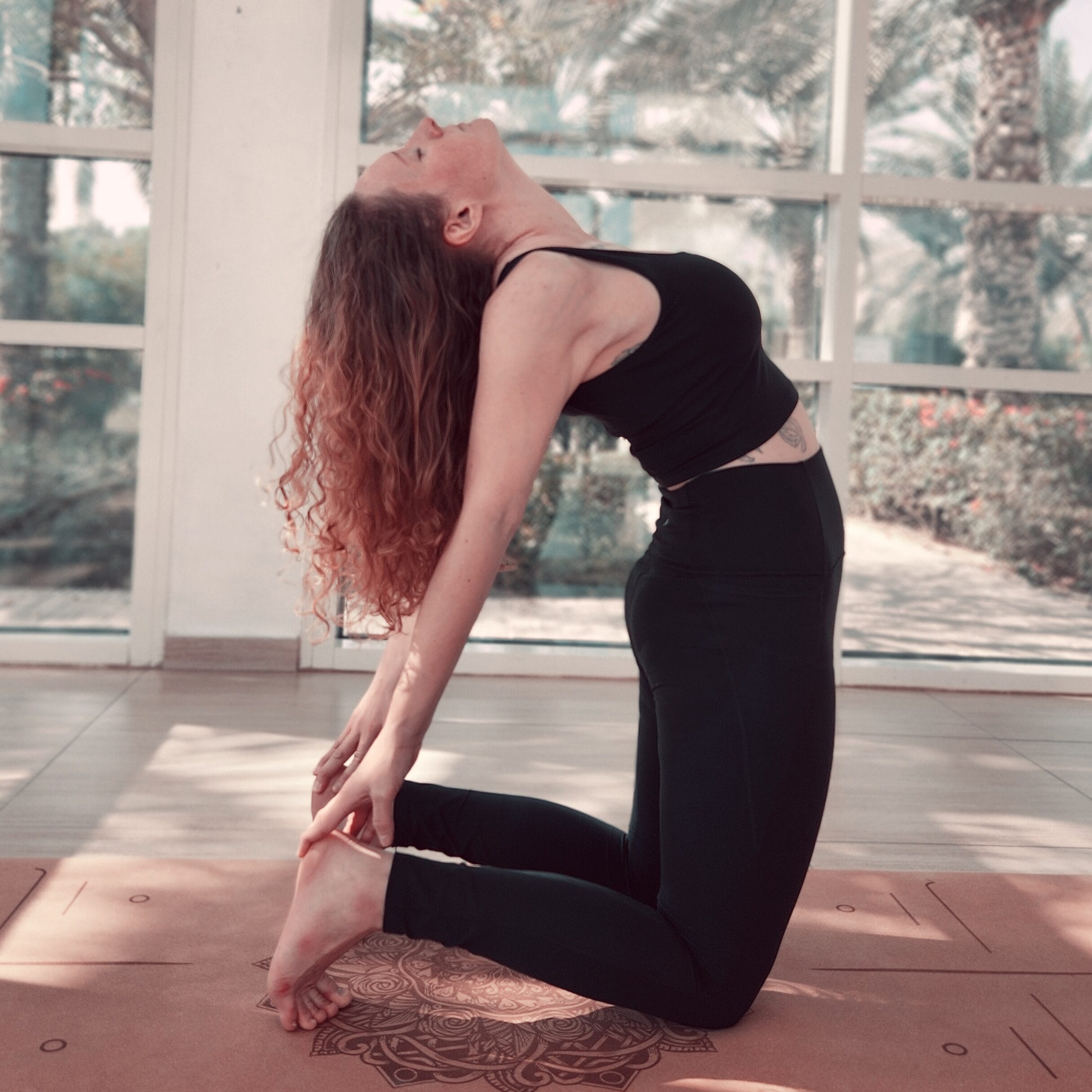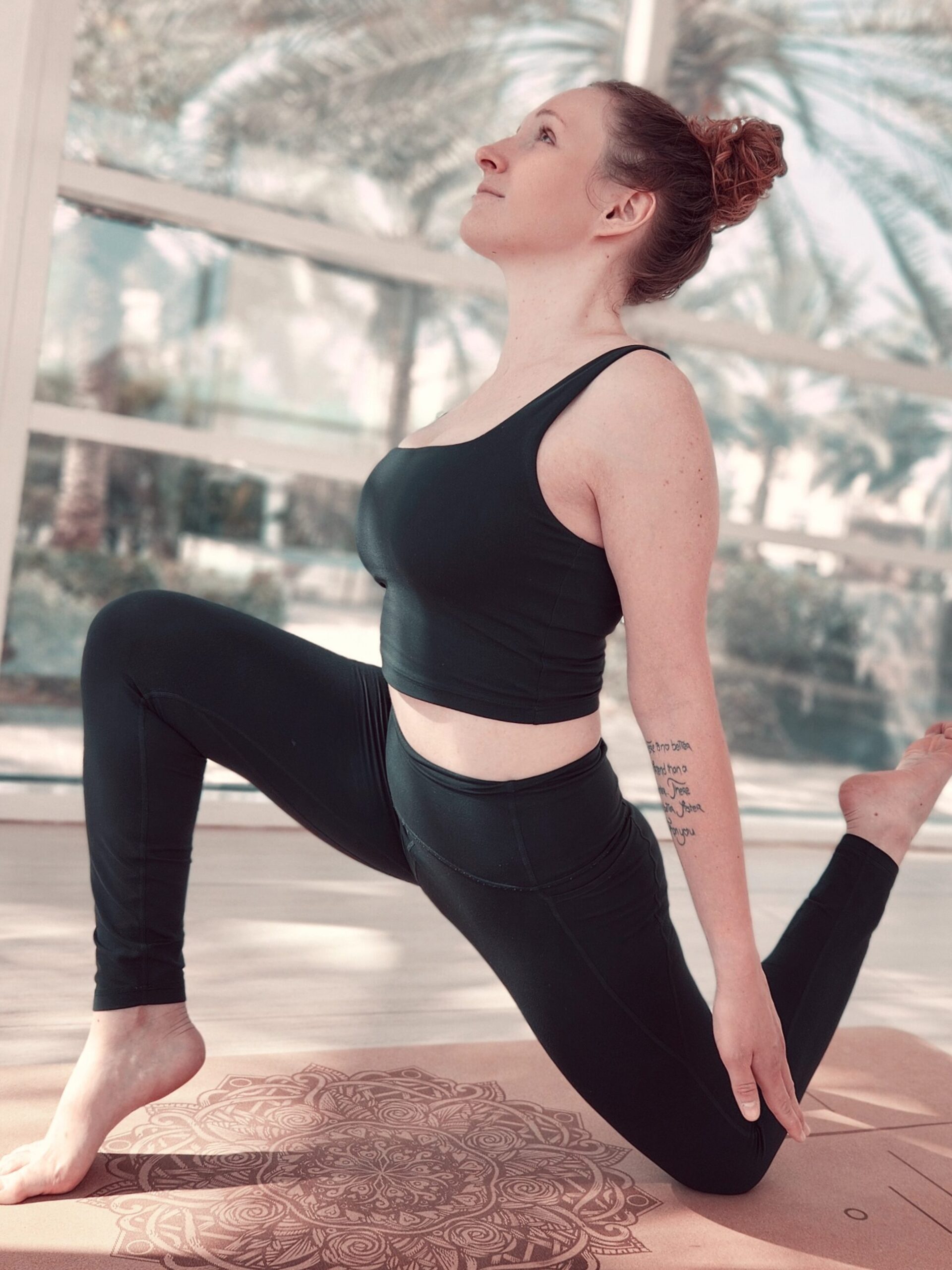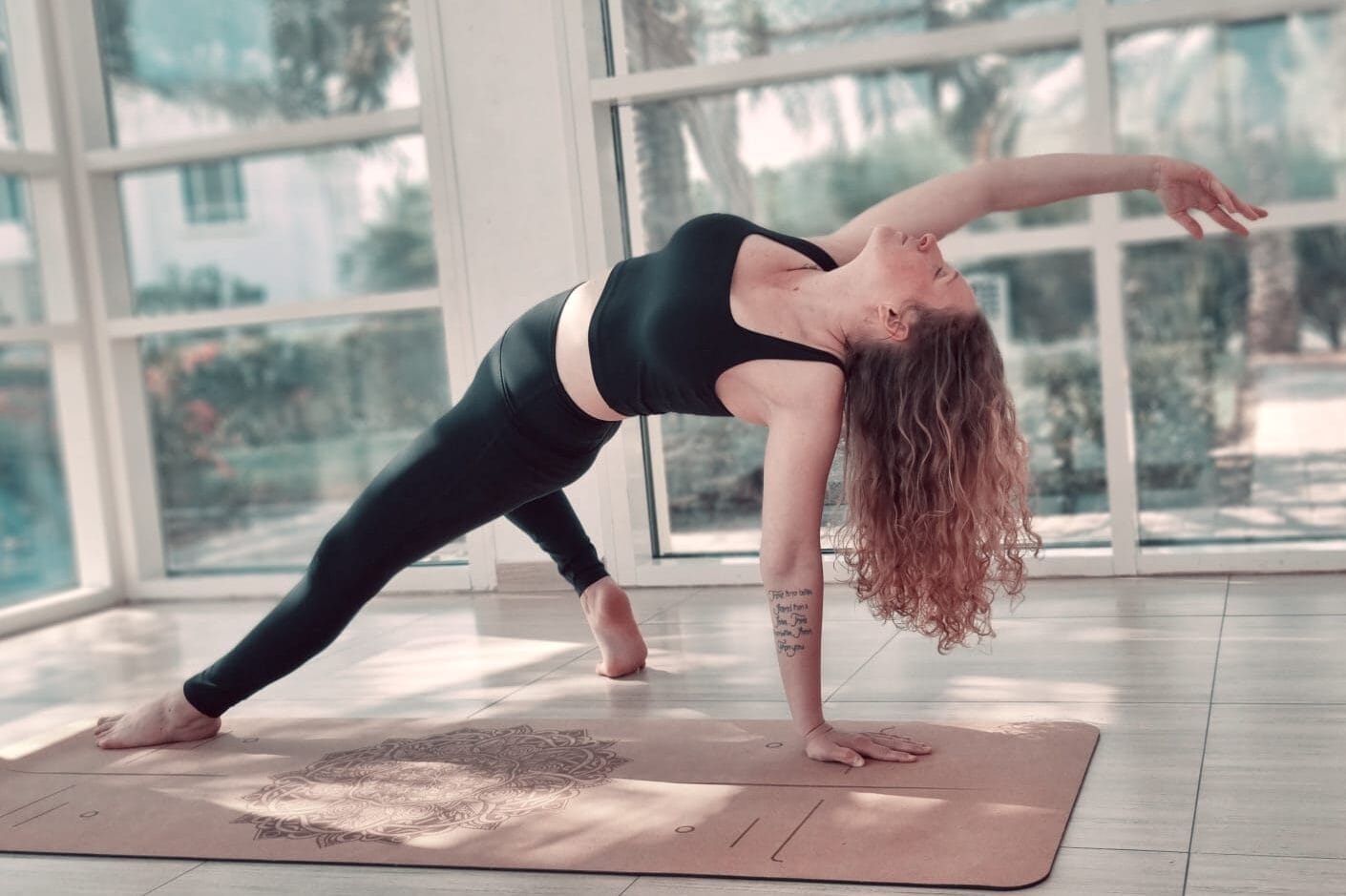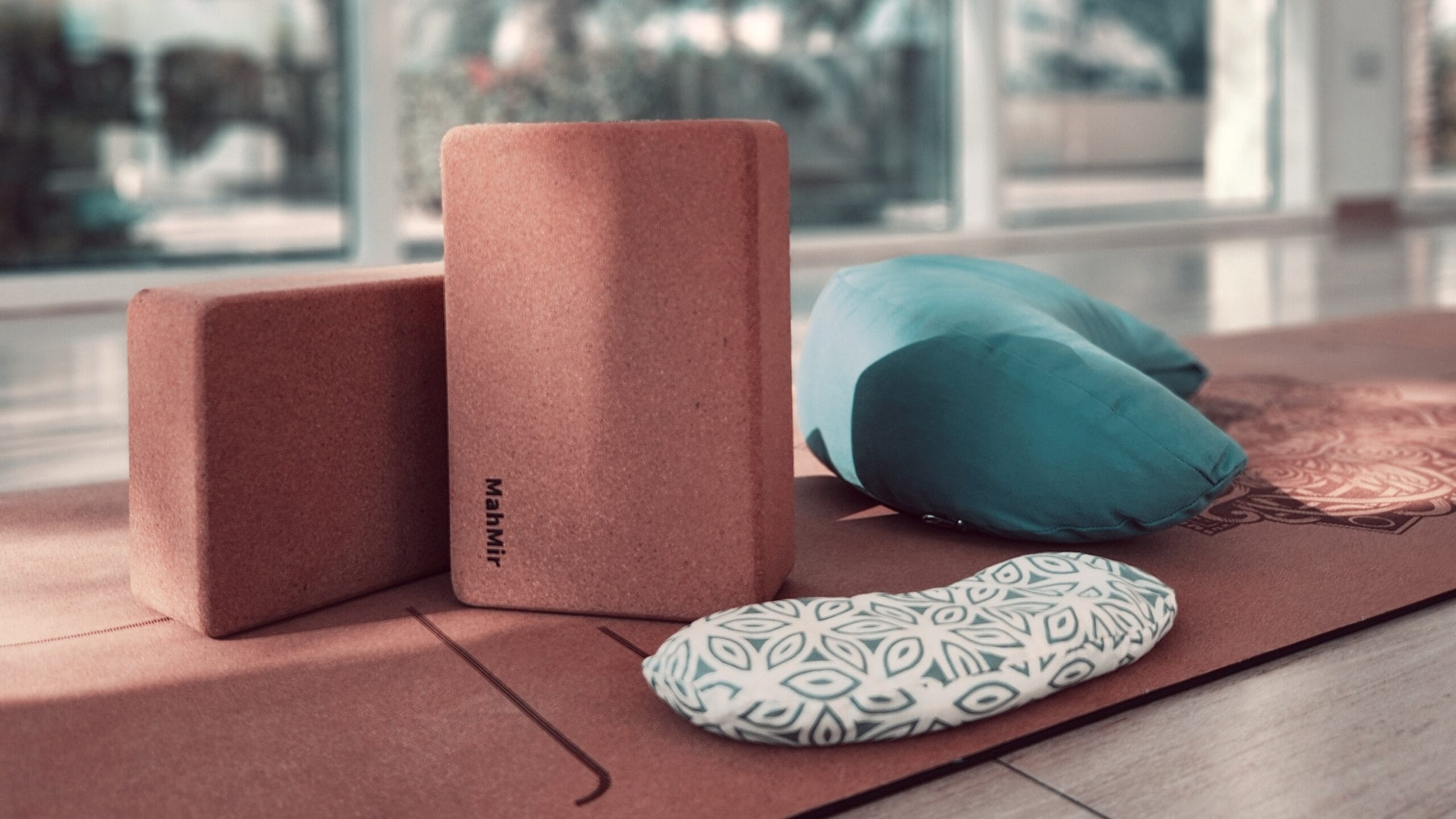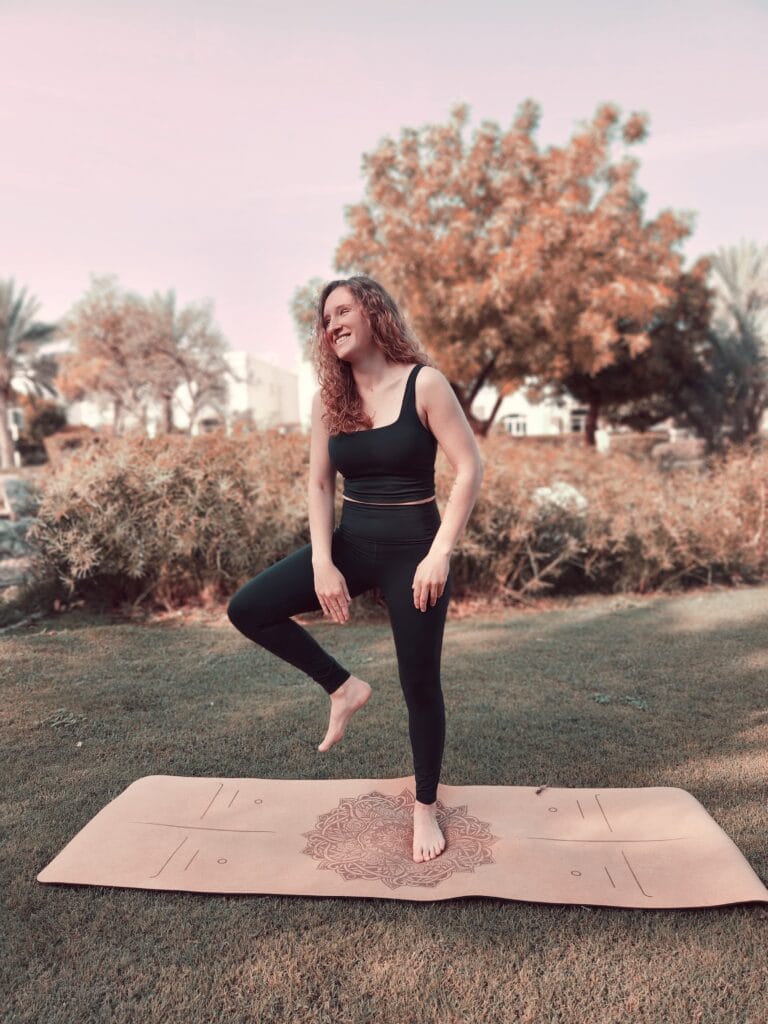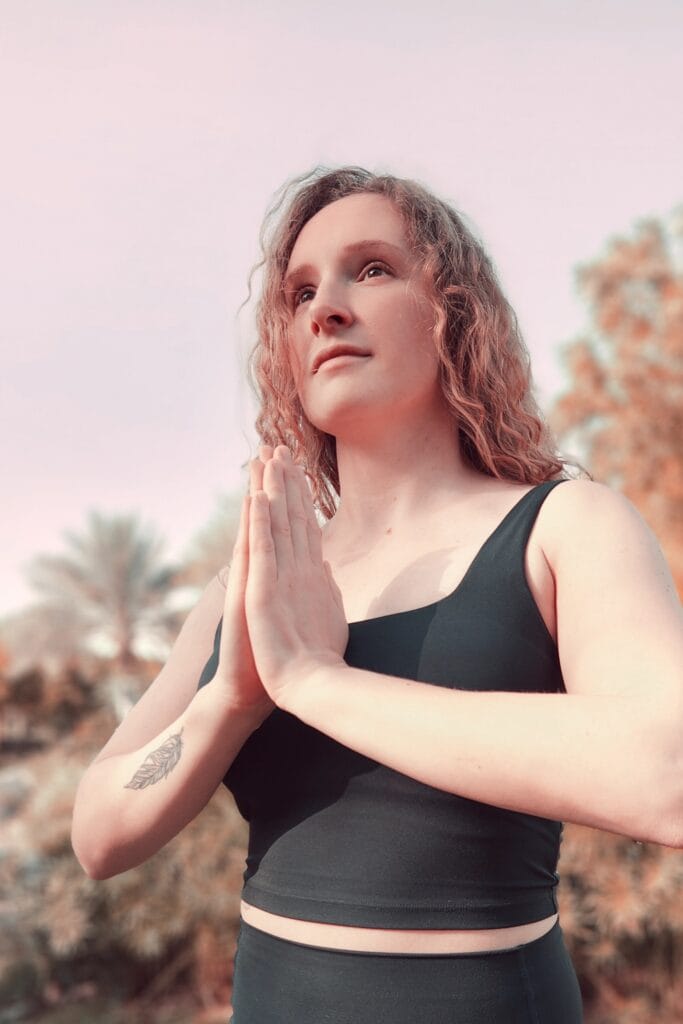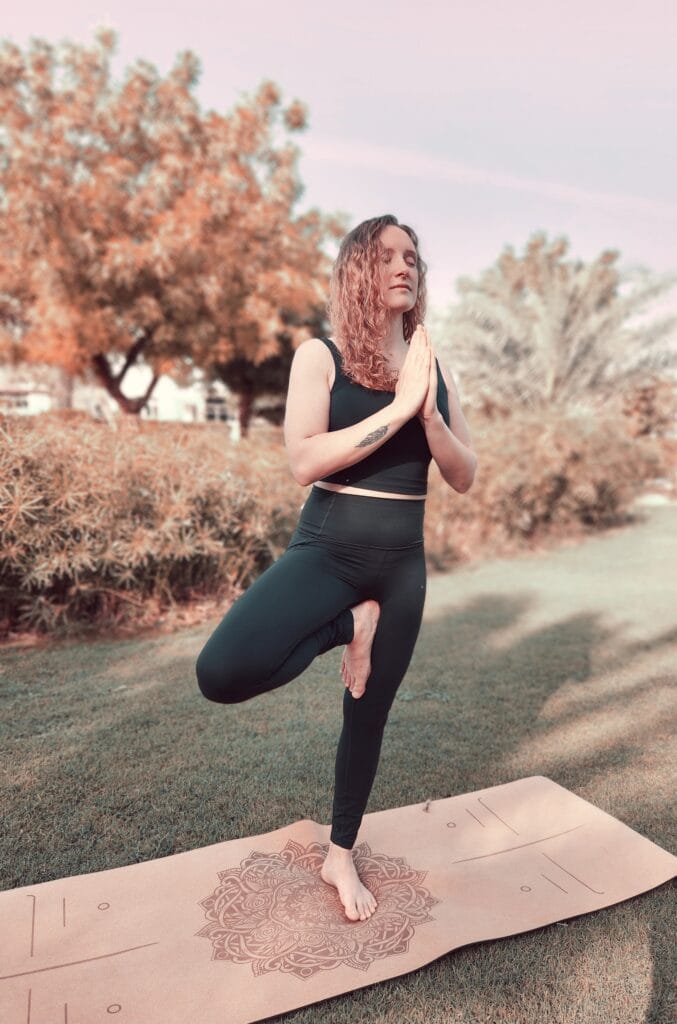Your cart is currently empty!
Author: Alina

From Burnout to Balance – How Yoga Helped Me Find Myself Again
“Yoga didn’t fix me — it reminded me that I was never broken. I just needed space to breathe, feel, and come home to myself.”
Alina SaibelWhen Everything Feels Like Too Much
If you’re in a season where everything feels like too much — where you’re doing your best to keep it all together, but inside, something is unraveling — you’re not alone. Maybe you’re lying awake at night, replaying your day with a heavy chest. Or waking up already tired, anxious about the hours ahead. Maybe you’ve started pulling away from the things and people you once loved, unsure why it all feels so hard.
This is the kind of quiet overwhelm that often goes unnoticed by others — but it’s loud in your body, in your breath, in your spirit.
I know that feeling well. I was there too. As a nurse, I gave everything to others, but inside I was running on empty. Over time, I lost touch with joy, with lightness, and eventually, with myself. I was exhausted beyond the physical — weighed down emotionally and spiritually.
And when it felt like I had nothing left to give, one truth began to surface: something needed to change. And that change could begin — gently, quietly — with me.

What Burnout Really Looks Like
Burnout doesn’t always look dramatic. Sometimes it looks like high-functioning exhaustion. Like saying “I’m fine” when you’re anything but. Like showing up for everyone else while quietly fading from your own life.
If you’ve experienced some of these signs, you might be closer to burnout than you realize:

- Constant fatigue, no matter how much you rest
- Trouble sleeping, or waking up already anxious
- Feeling emotionally numb or overly sensitive
- A sense of disconnection from your body
- Losing interest in things you once enjoyed
- Digestive issues, tension, headaches, or frequent illness
Below, I will share a more detailed overview of common symptoms associated with burnouts to help you better understand the different ways it can manifest.
Decline in mental performance and clarity
- Difficulty concentrating or focusing
- Memory lapses, brain fog
- Indecisiveness
- Overthinking or constant worry
- Feeling overwhelmed by small tasks
- Pessimistic or cynical thoughts
Ongoing exhaustion, even after rest
- Constant fatigue regardless of sleep
- Feeling depleted or “burned out”
- Lack of energy for hobbies or social life
- Low physical stamina
- Feeling like you’re just “getting through the day”
Imbalance in your inner emotional world
- Feeling empty or emotionally drained
- Irritability or sudden emotional outbursts
- Mood swings or emotional numbness
- Loss of joy or motivation (anhedonia)
- Increased sensitivity or disconnection
- Guilt, shame, or feeling “never enough”
- Low self-esteem or hopelessness
Disruptions in rest and recovery
- Difficulty falling or staying asleep
- Waking up feeling anxious or wired
- Unrestful sleep – waking up tired
- Nighttime jaw clenching or restlessness
When the body becomes the messenger
- Muscle tension (neck, jaw, shoulders)
- Headaches or migraines
- Digestive issues (bloating, nausea, IBS)
- Rapid heartbeat, shortness of breath, dizziness
- Frequent colds, weakened immune system
- Hormonal imbalances or low libido
- Skin flare-ups or chronic inflammation
Changes in your habits and interactions
- Social withdrawal or isolation
- Avoiding responsibility or conflict
- Excessive use of food, alcohol, or screens
- Escaping into constant busyness
- Loss of interest in things you used to enjoy
- Disconnection from self or others
Impact on identity, self-worth, and purpose
- Constantly feeling not good enough
- Loss of purpose or direction
- Identity crisis – “I don’t know who I am anymore”
- Just going through the motions, feeling robotic
- Emotional disconnection or spiritual numbness
These are not signs of weakness.
They are your body’s way of whispering – or shouting – that something is out of balance.
A gentle but powerful call for regulation, care, and reconnection.A Way Forward – Why This Matters Now
If you’re reading this, chances are you’ve tried everything else: powering through, pretending you’re fine, putting yourself last. Maybe you’ve told yourself it’s just a rough patch. Maybe you’re afraid to slow down because you don’t know what you’ll feel when you do.
That was me too. And that’s exactly why yoga helped.
Yoga gave me permission to stop. To feel. To not be okay — and still be worthy of care. It didn’t demand anything of me. It simply invited me back to myself.
If you’re carrying more than your body can hold, if you’re moving through your days on autopilot, I want you to know:
You don’t have to be ready. You just have to be willing.
You don’t have to go fast. You just have to go gently.
You don’t have to do it alone.Healing isn’t a finish line — it’s a quiet return to who you’ve always been underneath the noise.
So if you’re wondering whether yoga could help you too, start with something simple.
A few deep breaths. A short, nourishing class. A moment of silence before your day begins.You don’t have to be lost forever.
Your breath, your body, your inner strength will guide you home.What Actually Helped Me Heal
Healing from burnout is never one-size-fits-all.
But here’s what helped me:- Asana (movement):
Gave me permission to feel safe in my body again - Breathwork:
Helped me down-regulate anxiety and reconnect with the moment - Meditation:
Brought me clarity and peace when my mind felt foggy and scattered - Yoga Nidra:
Replenished my nervous system in a way rest alone never could - Mantra & Mudras:
Created a space where I could feel empowered again, even when words failed


Curious to try it yourself? Start with a short, nourishing class on my YouTube channel – no experience needed.
Real Pros & Cons of Starting Yoga During Burnout
✅ Benefits
- Nervous system regulation
- Emotional release without pressure to explain or perform
- Deep rest and improved sleep
- Stronger body-mind connection
- Space to hear your own truth again
⚠️ Challenges
- Resistance to slowing down (especially when you’re used to “pushing through”)
- Confronting uncomfortable feelings that have been buried
- Needing time and patience to rebuild trust in your body
But here’s the truth: there is no “perfect moment” to begin. Healing starts the moment you say yes to yourself.
If You’re Still Unsure – Remember These Words

You don’t need to do a full flow, when you don’t feel like it.
Gentle breathwork or a short yoga nidra can be deeply restorative.
Start by giving yourself 5–10 minutes and you will soon realize: every moment counts.Yes, you might feel emotional during a yoga session.
And that’s okay.
Yoga creates a safe space to let go, soften, and reconnect with emotions that need to be acknowledged.Begin with a gentle class.
Try my Evening Yoga in Bed or the Let Go & Relax Session – no pressure, just presence.
How I Teach – And Why It’s Different
Today, I teach yoga to women who carry a lot — emotionally, mentally, energetically.
My approach is slow, safe, and trauma-informed.
No pressure.
No perfection.
Just breath, movement, and presence.- You will be seen, but never judged
- You can pause anytime — and that’s a strength, not a failure
- Your body is your guide, not the shape of the pose
Explore a trial session, or have a look at my class package offers and membership plan offers if you’re ready for a deeper kind of self-care.
You’re Not Alone. And You’re Not Broken.
If you feel disconnected, weary, or quietly overwhelmed, please know: You don’t have to fix yourself. You simply have to come back to yourself.
One breath. One kind movement. One small permission to rest.
That’s where it begins.
With love,
Alina
Forget the Myths – Here’s the Truth About Starting Yoga as a Total Beginner
“You don’t have to be perfect to begin. You just have to begin to feel whole.”
Alina SaibelThe Beginning Is the Hardest Part – And That’s Okay
So, you’re thinking about trying yoga, but something keeps holding you back. Maybe you’ve caught yourself saying things like:
- “I’m not flexible enough.”
- “I wouldn’t know what to do.”
- “Everyone else will look like they know what they’re doing.”
If any of that sounds familiar, you’re not alone. Most people feel this way when they’re just starting out.
But here’s the good news: you don’t need to be flexible, experienced, or even confident to begin. You just need to show up as you are. That alone is an act of courage.
Yoga isn’t about being perfect — it’s about being present.
You’re allowed to wobble. You’re allowed to take breaks. You’re allowed to just breathe and listen. And that’s already yoga.
5 Yoga Myths That Keep You From Starting
Let’s clear the air and bust some common myths that might be standing between you and your mat:
1: You have to be flexible to do yoga.
Truth: Flexibility is a result of yoga, not a requirement.
2: Yoga is only for young, slim, bendy women.
Truth: Yoga is for every body. Truly. All ages, all shapes, all walks of life. Your body is welcome.
3: Yoga is too spiritual or esoteric.
Truth: Yoga can be deeply spiritual – but it can also be purely physical or meditative. It’s your choice how deep you go. Your mat is your personal space.
4: Yoga doesn’t count as real exercise.
Truth: Ever tried holding Warrior II for 60 seconds? It builds strength, endurance, coordination, and focus. Many styles of yoga are a full-body workout.
5: You need expensive gear or outfits.
Truth: All you need is a mat, comfortable clothes, and an open mind. Simplicity is strength.

Frequently Asked Questions from Beginners
“How often should I practice yoga?”
Start with 2-3 times per week. Consistency matters more than intensity. Even 10 minutes a day can shift your mood and mindset.
“Can I do yoga even if I have injuries or chronic pain?”
Yes – with modifications and the right guidance, yoga can be incredibly therapeutic. Inform your teacher and always honor your limits.
“What style should I choose as a beginner?”
Try Hatha, Yin, or Gentle Vinyasa. These styles are slower-paced and focused on alignment, breath, and ease.
“What if I can’t keep up in a class?”
That’s perfectly okay. Yoga is not a performance. Go at your own pace. Nobody is watching — they’re all focused on their own journey.
“Will people judge me in class?”
No. The right class will make you feel safe, not scrutinized. If you don’t feel comfortable, it’s not you — it’s the wrong space.
Pros & Cons of Starting Yoga
Starting something new can feel daunting — and yoga is no exception. Even if you’re nervous, unsure, or convinced you’re ‘not ready yet’, stepping onto the mat for the first time can already bring powerful benefits. Yoga doesn’t wait for perfection. It starts working the moment you begin.
Here are some of the real-life pros and cons to expect when you start your yoga journey:

Pros:
- Increases body awareness and mobility
- Reduces stress and anxiety
- Builds strength and balance
- Enhances breathing and mindfulness
- Encourages self-compassion and acceptance
- Supports better sleep and emotional regulation
Cons:
- Can feel intimidating at first
- Progress may feel slow (because it’s subtle and deep)
- You may uncover emotional blockages that need processing
But here’s the thing: Every moment on the mat teaches you something. Even discomfort is part of your growth. It’s not about mastering a pose — it’s about meeting yourself within it.
Practical Tips for Your First Yoga Steps
- Start at home if it feels safer. Choose beginner videos from certified teachers who guide with clarity and kindness.
- Attend a beginner-friendly class. Look for words like “gentle,” “intro,” or “level 1.” Call ahead if you’re unsure.
- Use props. Blocks, straps, and cushions are not signs of weakness – they are tools of empowerment and support.
- Focus on your breath. It’s your anchor when the mind wanders or the pose challenges you. Breath first, pose second.
- Let go of comparison. Your body is unique. Your journey is your own. Your yoga doesn’t have to look like anyone else’s to be real.
- Celebrate small wins. The first time you breathe deeply, soften into a stretch, or show up on a tough day — that’s a victory.
My Secret Tip as a Teacher: It’s Not About the Pose
So many beginners obsess over the shape of the pose. But yoga isn’t about how a pose looks – it’s about how it feels.
The real magic happens when you start tuning in rather than looking out. When your breath, body, and awareness move in unison – even for a single breath – that’s yoga. And you don’t have to be advanced to experience it.
The pose is not the goal. The feeling is.
What to Expect from Yoga with Me

At Yoga by Alina, my mission is to make yoga a space of safety, healing, and authenticity.
My classes are:
- Mindful and inclusive
- Gentle but effective
- Centered around inner connection, not outer performance
- Designed to meet you exactly where you are
- Rooted in compassion, not competition
Whether you’re curious, cautious, or completely new – you’re welcome. Come with your questions, your doubts, your curiosity. You don’t need to be anything other than yourself.
Try It for Yourself – A Gentle Start on YouTube
Curious to dip your toes in before joining a full class? On my YouTube channel, you’ll find short, beginner-friendly yoga sessions designed to help you feel safe, grounded, and gently guided. They’re the perfect way to get a feel for my teaching style — and to begin moving and breathing with intention at your own pace.
30 Minutes Full Body Detox Yoga Flow 13 Minutes Full Body Yoga in Limited Spaces 10 Minutes Energy Boost Whether you have 5 or 15 minutes, there’s something waiting for you — no pressure, no expectations.
Ready to Begin?
If something in you is whispering “maybe…” – listen to it.
Start with a class. Book your first session. Come as you are. Let yoga do the rest.
You don’t have to have it all figured out. You just have to begin.
Namaste,
Alina
